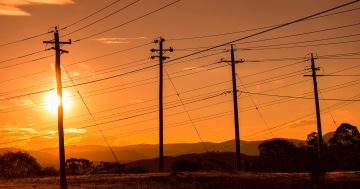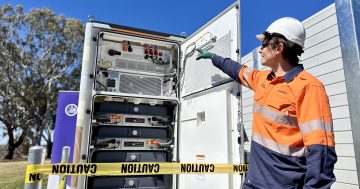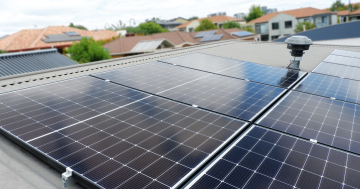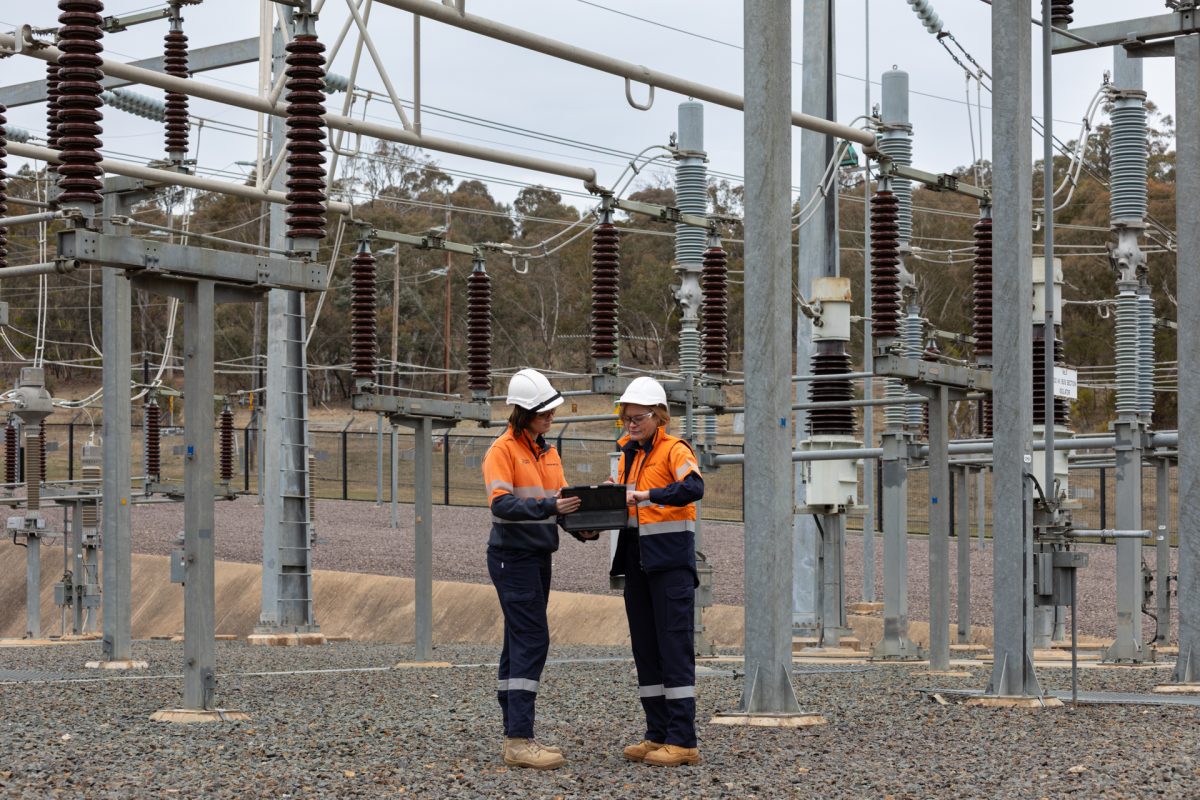
Evoenergy manages the ACT’s electricity network. Photo: Michelle Kroll.
The ACT’s energy provider has said its network remains one of the most reliable in the country even as demand for electricity – and the number of blackouts – soars.
Canberra households shivered through a June with the coldest average overnight temperatures in 41 years (-2.7 degrees Celsius, compared to the long-term average of 1.1 degrees Celsius) – prompting many to ratchet up the heating.
Evoenergy says electricity demand in the ACT rose to record levels in June 2025, and was accompanied by 20 per cent more outages than in June last year.
The provider attributed the added stress to the increased number of households on the network, as well as the number of households that have swapped gas appliances for electric ones.
“This increase coincided with colder-than-average minimum temperatures and record electricity demand in the ACT, driven by winter heating, population growth and electrification,” a spokesperson told Region.
Suburbs in Gungahlin and the Molonglo Valley were most affected, being the “fast-growing areas with increasing electricity demand”.
“In some cases, aging assets and the need for additional capacity have also contributed.”
The ACT’s population grew by 6838 residents last year, and the number of residential dwellings by 3900.
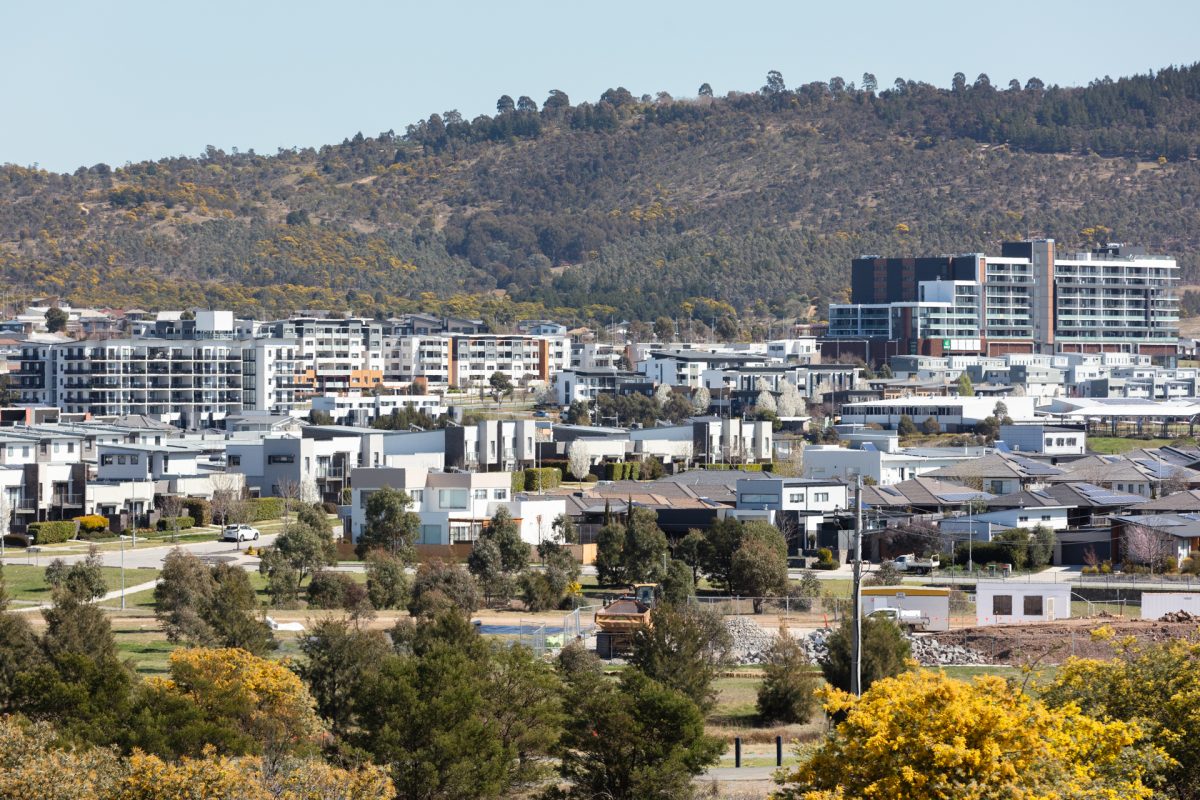
Molonglo Valley was one of the ACT’s districts most affected by the rise in blackouts. Photo: Michelle Kroll.
Meanwhile, residential gas connections have been steadily declining since 2021. The latest figures reveal more than 5000 ACT households disconnected their gas in 2023.
According to modelling undertaken by the government in 2022, the ACT will have consumed 2800 gigawatt-hours (GWh) of electricity by the end of this year, but by 2045, annual demand on the grid is expected to have increased by 21 per cent.
The government says this figure represents “reasonably modest growth” given rooftop solar is expected to meet an additional 26 per cent of the ACT’s electricity needs by then.
Evoenergy remains upbeat about the future, thanks to the ACT network being “one of the most reliable in the country – in the top two – and overall reliability improved last year”, according to the Australian Energy Regulator’s (AER) Annual Benchmarking Report.
“We have robust maintenance and planning in place, are actively managing the network to meet demand, and are well prepared for the remainder of winter,” the spokesperson said.
Ahead of this year’s winter, Evoenergy installed six temporary batteries in Denman Prospect to improve reliability in the Molonglo Valley, which the provider said “played a key role during the all-time system peak in June” and helped prevent more outages.
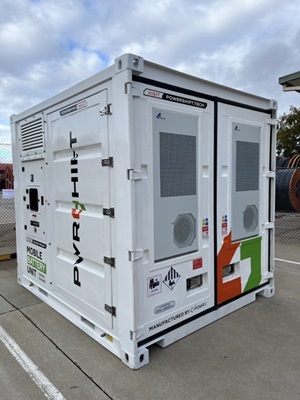
One of the big batteries in Molonglo Valley. Photo: Evoenergy.
The batteries are also chipping in while a new Molonglo Zone Substation is still under construction, expected to be complete before next winter.
Evoenergy said similar upgrades to the grid in Gungahlin prevented the situation from being worse there, too.
“While June and July saw more outages than usual, Gungahlin experienced a 41 per cent decrease in unplanned outages when comparing the 2023-24 financial year to the 2024-25 financial year, showing the benefits of targeted upgrades and maintenance in the area,” the spokesperson said.
The provider said it will continue to “meet growing demand and maintain reliability” by upgrading network infrastructure in Gungahlin and Molonglo Valley, along with “renewal of aging assets” and “regular scheduled maintenance” across the network.












